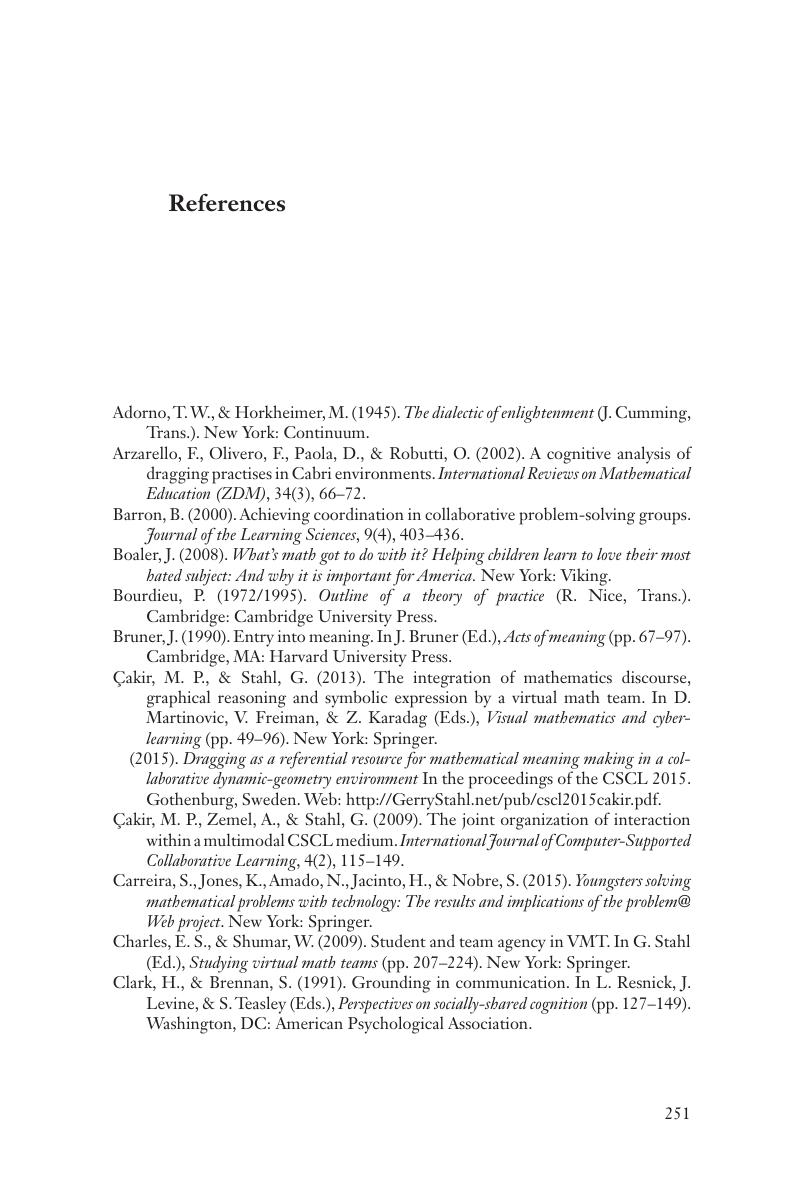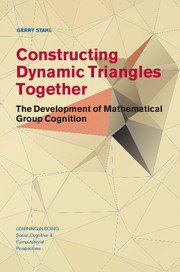Book contents
- Half title page
- Learning in Doing: Social, Cognitive, and Computational Perspectives
- Title page
- Copyright page
- Contents
- Contents
- Contents
- Series Foreword
- Preface
- Book part
- Introduction to the Analysis
- Researching Mathematical Cognition
- Analyzing Development of Group Cognition
- Session 1: The Team Develops Collaboration Practices
- Session 2: The Team Develops Dragging Practices
- Session 3: The Team Develops Construction Practices
- Session 4: The Team Develops Tool Usage Practices
- Session 5: The Team Identifies Dependencies
- Session 6: The Team Constructs Dependencies
- Session 7: The Team Uses Transformation Tools
- Session 8: The Team Develops Mathematical Discourse and Action Practices
- Contributions to a Theory of Mathematical Group Cognition
- Constructing Mathematical Group Cognition
- Bibliography
- Author Index
- General Index
- References
Bibliography
Published online by Cambridge University Press: 05 November 2015
- Half title page
- Learning in Doing: Social, Cognitive, and Computational Perspectives
- Title page
- Copyright page
- Contents
- Contents
- Contents
- Series Foreword
- Preface
- Book part
- Introduction to the Analysis
- Researching Mathematical Cognition
- Analyzing Development of Group Cognition
- Session 1: The Team Develops Collaboration Practices
- Session 2: The Team Develops Dragging Practices
- Session 3: The Team Develops Construction Practices
- Session 4: The Team Develops Tool Usage Practices
- Session 5: The Team Identifies Dependencies
- Session 6: The Team Constructs Dependencies
- Session 7: The Team Uses Transformation Tools
- Session 8: The Team Develops Mathematical Discourse and Action Practices
- Contributions to a Theory of Mathematical Group Cognition
- Constructing Mathematical Group Cognition
- Bibliography
- Author Index
- General Index
- References
Summary

- Type
- Chapter
- Information
- Constructing Dynamic Triangles TogetherThe Development of Mathematical Group Cognition, pp. 251 - 260Publisher: Cambridge University PressPrint publication year: 2015



